![]() Welcome to Kinfolk, where our lives are holier when they are shared together. In the summer of 2012 Kinfolk was a dream. Now, Kinfolk is a thriving young adult community that empowers young people for the future of the church.
Welcome to Kinfolk, where our lives are holier when they are shared together. In the summer of 2012 Kinfolk was a dream. Now, Kinfolk is a thriving young adult community that empowers young people for the future of the church.
Kinfolk got its start inside of a traditional and historical United Methodist Church near Orlando, FL. The name, logo and tagline were all created by a young adult couple whose day job is designing logos and branding for high end restaurants in Orlando. The logo represented something new for these young people. They were tired of those in their church complaining about the lack of young adult leaders and they were determined to do something about it. The newly named Kinfolk community would be a place to empower leaders for the next generation of the church.
The problem was clear, there were a lack of young adult leaders at First United Methodist Church of Winter Park. And, although this problem is not unusual amongst mainline churches, the response of Kinfolk started with a different strategy. Rather than attracting young people back with the newest trend, the response was to create a community that empowered young adults through familial and vocational structures inside of a historical and traditional mainline church. Through these structures, leaders were empowered and insights were gathered into possibilities for many other congregations facing similar challenges. The focus for this blog will be on one part of my project on empowering young adult leaders for the next generation of the church: the vocational structure. It was here where we created a process for our young adults to understand their calling and create their own ministry so that they would become leaders.
Decline of the Church and the Problem of Young Adult Leadership
Walk into any United Methodist Church in America and you might begin to ask how long the denomination has been in steep decline. It is quickly apparent that many newer generations are noticeably absent from the denomination as a whole. The fastest growing religious group in the U.S. is not United Methodist. Instead, it is ‘None.’[1] The United Methodist Church has been losing over 100,000 members a year for the last 10 years.[2] As UMC senior leader Gil Rendle notes, “Currently, using the metrics of the United Methodist Call to Action initiative, only 15 percent of the current thirty-three thousand congregations measure up to being vital.”[3]
Orlando, Florida is ranked #9 on Barna’s research of the top ten most unchurched cities in the country.[4] Nones, unchurched, unaffiliated, and newer generations (which compound these categories) are prevalent in Orlando. First United Methodist Church of Winter Park, located northeast of Downtown Orlando, is a mainline church with a long history and tradition in the community. It has many of the things church planters long for: a paid-off mortgage, multiple pastors, a thousand at worship on Sunday mornings, a Trust connected to the church for missional opportunities and emergencies. But, this church, like many others, struggles with connecting with newer generations. One thing this church lacks is young people, specifically those in their 20s and 30s. If this trend continues, First United Methodist Church of Winter Park will one day cease to exist. This church was the case study for our theory in how a historical and mainline church responds to the lack of young leaders, mainly, creation as a pathway to young adult leadership.
Kinfolk wanted to attack the problem of a lack of young adult leadership at FUMC Winter Park not by beating the non-denominational churches at their own game in Orlando, but to get back to the most important aspect of meaning and purpose in a young person’s life, their calling. Vocation means calling and comes from the Latin word Vocare. Instead of creating a high-production worship service, Kinfolk created a space to help young people understand their vocation. The theory for Kinfolk, in contrast to fighting for an even more attractive worship service, was to empower leaders through a process of understanding one’s calling. The 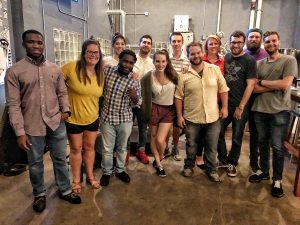 pathway to leadership, thus, for Kinfolk, was through a process of vocational discernment and creation of one’s own ministry.
pathway to leadership, thus, for Kinfolk, was through a process of vocational discernment and creation of one’s own ministry.
To focus on exploration of calling and creation of a ministry, Kinfolk focused on the young adult leader’s own gifts as a pathway for leadership. First, young people would be active participants in this process instead of passive takers of information (think studios of love and development over classroom teaching).[5]
All people are created in the image of God and they have a unique story and unique gifts. This does not exclude young people. Young people, like everyone else, have assets[6] and capacities that are to be nurtured. Each young person is called by God to understand what those are and live into that calling. For example, if young people are leaven and the church is the bread, young people must be part of the church, utilizing their full potential for the church to rise. The role of young people as the leaven instead of marginalizing them or attracting them with entertainment[7] is where Kinfolk’s vocational process finds the space to make a difference.
To create a foundation for this work, Kinfolk gave the process theological grounding. Second, it used modern economic theories to understand the way young people are interacting with and using their gifts and abilities in concrete ways, in the real world.
All are Called
Each person has a vocation (a calling) in their life, but each person needs a space and direction to figure out what this will be for them. Parker Palmer says, “Before I can tell my life what I want to do with it, I must listen to my life telling me who I am.”[8] God calls all people to God’s mission in the world. The key is to help God’s people find out where the space between them utilizing their unique gifts and the space where there is need meet. As Frederich Buechner said, “The place God calls you to is the place where your deep gladness and the world’s deep hunger meet.”[9] It is this space where we want our young adults to see and live into. When we do this, we will see young people come alive in vision and leadership. Howard Thurman said, “Don’t ask yourself what the world needs. Ask yourself what makes you come alive, and go do that, because what the world needs is people who have come alive.”[10] God calls all people. The goal for Kinfolk is to help young people see this calling in their lives and live into that calling. And, often that calling involves creating something.
Called to Create
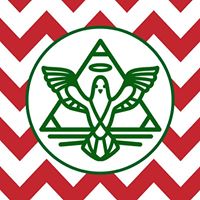 God created us and has called us to create. We are all creatures made for a purpose. Jordan Raynor in Called to Create says, “God created us to be co-creators with him, to do the things that God has done in creation—bringing order out of chaos to create new things for the good of others. God is calling us to be entrepreneurial.”[11] We were created to participate in God’s good work in the world. God’s people have meaning and purpose that is not only reserved for pastors.
God created us and has called us to create. We are all creatures made for a purpose. Jordan Raynor in Called to Create says, “God created us to be co-creators with him, to do the things that God has done in creation—bringing order out of chaos to create new things for the good of others. God is calling us to be entrepreneurial.”[11] We were created to participate in God’s good work in the world. God’s people have meaning and purpose that is not only reserved for pastors.
This misnomer has incredible implications for others because a person might not feel like they have a calling if they do not feel called to be a Pastor. Raynor goes on to say, “The highest calling is not being a pastor, but becoming all God called you to be.”[12] Therefore, all are called and all are called to be co-creators with God. Young adults have a vocation and purpose. They are called to be a part of the mission of God, utilizing their own unique gifts and they are called to create.
Economic Theories of Creating: The Creator Economy, The Gig Economy and Human-Centered Design
- The Creator Economy
There are three economic theories of creating which helped Kinfolk to create these spaces. The first is what the futurist Paul Saffo calls the transition from the consumer economy to the creator economy.[13] Here, the idea is that people do not just consume through their daily activities in our world anymore, they create value through their daily activities. For example, value is created by engagement, not solely consumption, like a generation before. This tells us that we must engage young people by helping them create, instead of creating church communities that act like a product given to the consumer. The consumer economy starts with “How do you consume?” and the creator economy moves to “How to create value in a networked world?”
- The Gig Economy
Harvard Business Review says, “There is no denying the growth of the gig economy.”[14] Some estimate that 57 million people in the U.S. are involved in the gig economy.[15] The gig economy is, essentially, when workers freelance and live as independent contractors, sometimes doing this on the side from their regular job or career. A recent Gallup Poll suggests “29% of all workers in the U.S. have an alternative work arrangement as their primary job. This includes a quarter of all full-time workers (24%) and half of all part-time workers (49%). Including multiple job holders, 36% have a gig work arrangement in some capacity.”[16] Gig work is not going anywhere and it is growing.[17] It gives people flexibility and opportunities to start one’s own business. Kinfolk wanted to use this as an advantage by giving a process to create one’s own ministry. If young people participate in the gig economy anyway, Kinfolk could get young people to create their own ministry as one of their gigs. Then they could live into their calling through a creation of a ministry project that uses what is already happening in their lives.
- Human-Centered Design
Finally, the last piece that helped Kinfolk create its vocational process comes from the idea of Human-Centered Design.[18] Human-Centered Design allows for the vocational discernment process for young adults to be centered upon ways of living that they deeply resonate with. Dave Thomsen says, “When done well, a human-centered approach fuels the creation of products that resonate more deeply with an audience — ultimately driving engagement and growth.”[19] Human-Centered Design works because it keeps the people you are trying to reach in the design process. A Human-Centered Design fights against blind spots from older generations of leaders in processes that would deter young people from understanding their calling, creating their own ministry and becoming leaders. It also beats assumptions and misunderstandings the church has about young people and makes them a part of the design process.
The Vocational Process
 These two foundations (theological and economic) paved the way for Kinfolk’s vocational process. It is broken into three parts. Part one is the practicing of five missional habits. Kinfolk wants future young leaders to think about Christianity in the 166 hours. In our culture, church-going people may go to church on Sunday morning for two hours where a worship service is run by professionals. Kinfolk’s goal is to have young leaders think differently about their Christian life by wrestling with what Christianity looks like in the everyday, the other 166 hours of their lives. Like Dietrich Bonhoeffer, Kinfolk wants them to move into a concrete Christianity that is both public and private so that love of neighbor happens at school or work.[20] How one interacts with the world can help them see the world differently and illuminate one’s meaning and purpose. In this case, practicing Christian habits in the everyday can help them start to think about what their calling may be in the world through exploration and practice.
These two foundations (theological and economic) paved the way for Kinfolk’s vocational process. It is broken into three parts. Part one is the practicing of five missional habits. Kinfolk wants future young leaders to think about Christianity in the 166 hours. In our culture, church-going people may go to church on Sunday morning for two hours where a worship service is run by professionals. Kinfolk’s goal is to have young leaders think differently about their Christian life by wrestling with what Christianity looks like in the everyday, the other 166 hours of their lives. Like Dietrich Bonhoeffer, Kinfolk wants them to move into a concrete Christianity that is both public and private so that love of neighbor happens at school or work.[20] How one interacts with the world can help them see the world differently and illuminate one’s meaning and purpose. In this case, practicing Christian habits in the everyday can help them start to think about what their calling may be in the world through exploration and practice.
Michael Frost’s BELLS model[21] was used in part 1 of the process. In Surprise the World: 5 Habits for Highly Missional People, Frost provides 5 practices to move Christianity into daily life and help Christians think about their ordinary lives as mission. The habits Frost uses are Bless, Eat, Listen, Learn and Sent. These practices help young people remake the world so that they see the world as a space with possibility to live out their calling.[22]
Part 2 focuses on self-discovery and focuses on one’s gifts and unique place in the world. Each person has a unique story and unique gifts which generate one’s calling, their vocation. Kinfolk uses multiple gift inventories and exploration in Part 2. The Enneagram[23] is used to help the process of self-discovery by identifying and understanding their type, how they are interconnected to and relate to others and how they relate to and deal with fear. Second, they take a gift inventory[24] based on Ephesians 4 because the five gifts help see distinctions between gifts, but mainly because verse 12 says, “Their responsibility is to equip God’s people to do his work and build up the church, the body of Christ.”[25]
Part 3 of Kinfolk’s process of understanding vocation ends with the opportunity to create a ministry that flows out of those practices and unique gifts. Part 3 is the creation of one’s own ministry and is the final piece to the vocational process. The final part of the process allows a creation of a ministry project that matches the gifts and passions of the young person with their calling. Since young adults are able to see meaning,[26] they must be sent out![27] Once a calling is understood and discerned, Kinfolk wants the young adults to create what they feel called to do. The end goal in the vocational process is to create their own ministry to join God’s mission in the world.
Process and Results
The beta-test for Kinfolk’s vocational process started in the Fall of 2016. A group of five people from the Kinfolk community were hand-picked to be a part of this process. All of them were in their twenties and ranged from 23-29. There were 3 women and 2 men as part of this group. The group of five committed to a year-long development process that would meet bi-weekly for a whole year. The entire group started and finished the entire process. Out of these five, four of them started the process of creating their own ministries. After they finished the vocational discernment process, they were offered a micro grant to start their ministry and asked to fill out a grant form explaining their idea, how it matched their gifts and passions with their calling[28] and what the money would be used for.[29]
The first ministry creation idea was from a young woman who was 24 at the time. Her Kinfolk ministry project was the creation of retreats for those her age that she knew who were doubting Christianity or had been hurt by Christianity. Unfortunately, she moved away and the project stalled. The second project was from a young man who was 26 at the time and he created a film series called Cinnabar.[30]
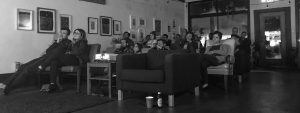
Cinnabar Film Series at Credo Coffee in Downtown Orlando. Film of the night: Spike Lee’s Do The Right Thing.
Started in 2017, this young man continues to lead this series which is held once a month throughout the year. The final project was a philanthropic project that included three of the participants, never got off the ground, even though these three young adults went through the entire year-long process. Although, this beta-test only created one successful ministry project that still lives on today, there were some unexpected outcomes from the development process. Every single person in that group became a leader in the Kinfolk community or the local church other than the young woman who moved away.
First, the young man who created the Cinnabar Film Series became the Co-chair of the board of Kinfolk. One of the young women became a leader of many different teams within the church for hospitality. One of the other young women in the beta-test completely changed her career to line up with her experience in the self-discovery stage of the process and became a leader for fundraising efforts for overseas missions for the church. Finally, the other young man used his musical talents to lead within the church. These were young people that were involved at FUMC Winter Park, but were now in positions of influence and leadership. But, maybe most important, all four who still live here joined our 14-member Kinfolk leadership team.[31] So, in this way, the process was incredibly successful! One ministry was created, but through this process all young adults joined our leadership team!
In the second year of the process a couple of changes occurred. Again, there were five people in the process, but more focus and time was needed for the ministry creation part of the process. This group committed to the year-long process, but also committed an extra year to meet with the director regularly so that their project could get off the ground. At the time of this writing, some projects are still in process. One of those four, a young college student, 22 years old, created a camping retreat for young adults. A young woman, 28 years old, is in the process of creating a ministry project based on young adult women mentoring young high school girls. Authors of Peace, a project by a young woman in college, 22 years old, is almost done and will be implemented soon. This woman also became an intern for Kinfolk during this process. A young woman, age 24, launched a project that connected young adults from the Kinfolk community and young adults who are homeless and in transitional housing through an organization called Covenant House and created BBQs at a local park for both groups to hang out and spend time together.[32] Again, this young college student also became an intern for Kinfolk during this process. The final person in the project, a young man, age 26, is a stage designer for a major theme park and is still deciding his project. Two important leadership points to note out of this second year. First, the process produced two interns for Kinfolk. Second, although not all of these young people have completed projects, all of them joined our 14-member leadership team which is currently in a small group together. Again, a hundred percent success rate.
Conclusion
Not only did Kinfolk’s vocational process create new young leaders for First United Methodist Church of Winter Park, Kinfolk’s process of leadership development through creation generated calling, vocation and leadership in the young adults. Surveys were taken from those who went through the process. Kinfolk found many important things through these stories on the survey responses. According to these leaders, Kinfolk allowed them to dig deeper[33] and “calling” moved from a one-time event to multiple and life-long callings.[34] Again, according to those in the process, Kinfolk empowered people to lead in strategy, structure and organizational and church leadership.[35] Kinfolk has also empowered people to move their leadership from Kinfolk into the greater church at FUMC of Winter Park.[36]
Kinfolk is a ministry by young adults, for young adults and for empowering leaders for the next generation of First United Methodist Church of Winter Park. Through a theological foundation of creation and calling, new theories in economics related to the daily lives of young people and a leadership development process that includes missional habits, self-discovery and the creation of one’s own ministry, Kinfolk has found distinct success in its mission to use vocation, calling and creation as a pathway to young adult leadership.
[1] Jean Hopfensperger, “Fastest Growing Religion is None.” November 11, 2018 http://www.startribune.com/fastest-growing-religion-in-minnesota-the-nation-is-none/498664191/.
[2] David W. Scott, “Coming to Terms with Numerical Decline in the U.S. UMC.” April 25, 2016. https://um-insight.net/in-the-church/umc-global-nature/coming-to-terms-with-numerical-decline/.
[3][3] Gil Rendle, Doing the Math of Mission. (Lanham: Rowman & Littlefield, 2014), 15.
[4] Barna Group, “Church Attendance Trends around the Country.” May 26, 2017. https://www.barna.com/research/church-attendance-trends-around-country/.
[5] Jeff Brumley, “Increasing rejection of church a good thing, Brian McLaren says,” December 7, 2018. https://baptistnews.com/article/increasing-rejection-of-church-a-good-thing-brian-mclaren-says/#.XCZfYy2ZN8d.
[6] John P. Kretzman and John L. McKnight. Building Communities From The Inside Out: A Path Toward Finding And Mobilizing a Community’s Assets. (Evanston: Institute for Policy
Research, 1993).
[7] John Paul Lederach. The Moral Imagination: The Art and Soul of Building Peace. (New York:
Oxford University Press, Inc., 2005). John Paul Lederach speaks on Hopeful Pessimism in The Moral Imagination states that pessimism is not always a bad thing. Instead, it can be the beginning of something new.
[8] Parker Palmer, Let Your Life Speak: Listening For The Voice Of Vocation. (San Francisco: Jossey-Bass, 2000), 4.
[9] Frederich Buechner, Wishful Thinking: A Theological ABC. (New York: Harper & Row, 1973) 118-119.
[10] Howard Thurman, quote taken from Becoming a Reflective Practitioner Course first semester of D.Min. Program. October 2016.
[11] Jordan Raynor, Called to Create: A Biblical Invitation to Create, Innovate, and Risk. (Grand
Rapids: Baker Books, 2017), 36.
[12] Ibid., 47.
[13] Ted Greenwald, “The Creator Economy: Futurist Paul Saffo On The New Business Epoch.” Forbes. December 06, 2011. Accessed June 4, 2017. https://www.forbes.com/sites/tedgreenwald/2011/10/19/the-creator-economy-futurist-paul-saffo-on-the-new-business-epoch/#61c1769261c1.
[14] Nicole Torres, “Are There Good Jobs in the Gig Economy?” July to August Issue 2018. https://hbr.org/2018/07/are-there-good-jobs-in-the-gig-economy.
[15] TJ McCue, “57 Million U.S. Workers Are Part Of The Gig Economy.” August 31, 2018. https://www.forbes.com/sites/tjmccue/2018/08/31/57-million-u-s-workers-are-part-of-the-gig-economy/#76cf99071186.
[16] Ibid.
[17] Aditi Shrikant, “The gig economy isn’t going anywhere. 4 experts explain why.” October 1, 2018. https://www.vox.com/the-goods/2018/10/1/17924856/gig-economy-uber-sharing
[18] Thomsen, Dave, “Why Human-Centered Design Matters.” https://www.wired.com/insights/2013/12/human-centered-design-matters/.
[19] Ibid.
[20] Dietrich Bonhoeffer, Life Together. (New York: Harper & Row Publishers, 1954), 8.
[21] Michael Frost, Surprise the World: Five Habits for Highly Missional People. (Illinois: NavPress, 2015).
[22] James K.A. Smith, Imagining the Kingdom, (Grand Rapids: Baker Academic, 2013), 167.
[23] Richard Rohr and Andres Ebert, The Enneagram: A Christian Perspective. Peter
Heinegg. trans. (New York: Crossroad Publishing Co., 1992). Taken through the Enneagram Institute.
[24] http://www.fivefoldsurvey.com/surveys/new?locale=en
[25] Ephesians 4:12, (NLT).
[26] H. Richard Niebuhr, The Meaning of Revelation, (Louisville, Kentucky: Westminster John Knox Press, 2006), 58. H. Richard Niebuhr states, “The heart must reason; the participating self cannot escape the necessity of looking for patters and meaning in its life and relations
[27] James K.A. Smith, Imagining the Kingdom, (Grand Rapids: Baker Academic, 2013), “The ending of Christian worship, then, is a sending. Having encountered God in Word and sacrament, we are transformed and renewed and empowered by the Spirit to take up once again the original vocation of humanity: to be God’s image-bearers by cultivating all the possibilities latent in God’s creation, now renewing and restoring a broken, fallen world. Drawn into union with Christ, the “end” of Christian worship is bound up with our sending for Christian action, rightly ordered cultural labor, the creational task of making and remaking God’s world. We are (re)made to be makers.” 5-6.
[28] Appendix A.
[29] Appendix B.
[30] http://www.cbfilmseries.com/.
[31] This team was started in the Fall of 2018. It started as a small group with the goal to begin a small group strategy for Kinfolk that would meet for a year, split in half and multiply small groups for young people. This would give another level of leadership for these young people.
[32] https://www.covenanthousefl.org/.
[33] https://www.surveymonkey.com/r/WZLF3D2., One young adult who started their own ministry said, “I’m not sure my conception of spiritual gifts/calling has changed, but I have learned more about my own call to ministry because of Kinfolk. I was asked to lead a time of contemplative prayer when I was just discovering how meaningful that practice would be to me. It was a chance to remember and re-enact a form of prayer I’d experienced only once but that was burned in my memory. Because of this enriching experience, I’ve gone on to lead other groups in prayer and meditation and to begin to teach on the subject. I was also fortunate to join a small formational group to study spiritual disciplines and the Enneagram and imagine what I could create as a unique “micro-ministry” in Orlando. As a result I started the Cinnabar film series, which has just completed its first calendar year with ten separate screenings. Over thirty people have gotten to experience film in a rich and sacramental way, and leading eight of those screenings was a powerful experience for me. All of this has its roots in Kinfolk.”
[34] Ibid., One person said, “I used to believe that “calling” was a one-time event, and related to something very large- like profession, being a mother, or choice of jobs. I now believe that while this is true, we can have more than one “calling,” and it can be a simple nudge to reach out to someone, extend kindness, or even to just sit for a moment and observe beauty. Because of Kinfolk, I see purpose and intention in the “In-between” moments.”
[35] Ibid., One person said, “Absolutely, which has been a tremendous gift. I have been invited to share thoughts on strategy and structure and learn more about organizational and church leadership. I’ve had opportunities to lead liturgy in dinner church, to serve communion, to host pub group, and to lead contemplative prayer.”
[36] Ibid., “Kinfolk has given me a sense of empowerment and belonging within the FUMC WP church as a whole, which gave me the confidence to lead and serve in many different capacities- in Elevate, the women’s ministry, the path forward discussions and Kinfolk board. It has also taught me that I don’t always need to say yes to some of these opportunities, and that I do not need to prove worth, and there is nothing I owe, to have this sense of belonging.”
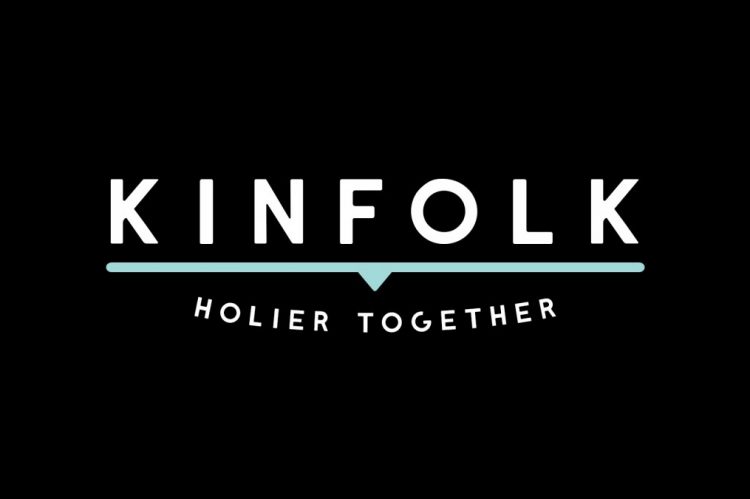
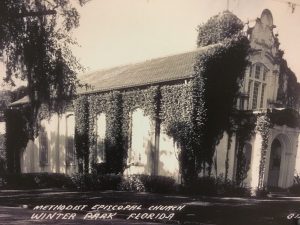
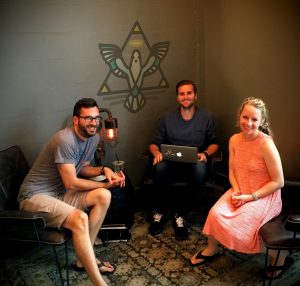
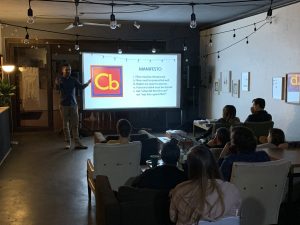
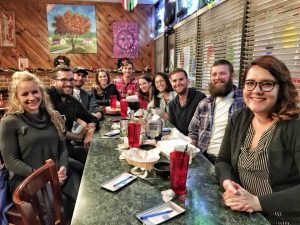

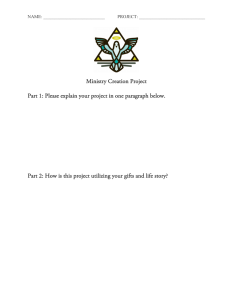
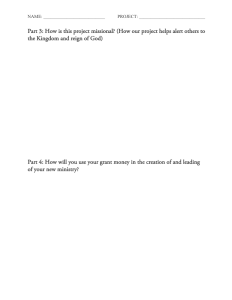
Very very well done!!
I wonder if young high school adults could seek and determine their God given talents. Knowing their talents then discover what God’s calling is for their vocation before entering college. As I matured in my faith I found that my vocation became my avocation. My vocation was acting out my faith in Christ as a living witness through my avocation. To work sharing His love and experiencing His grace is fun and exciting – not work. When you retire your vocation still remains the same and exciting as always.
Jon this work is so deeply needed in the modern church. You have beautifully captured the needs and talents of millennial culture. I’m sure you’ll do amazing things.